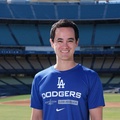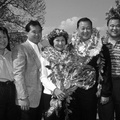One strong characteristic that marks the Japanese culture is the constant striving to name and define everything. They have a penchant for labeling ideas, types of food, special occasions, religious ceremonies, the changing seasons, and virtually every aspect of their lives. So it is not surprising that Japanese and Japanese Americans have specific names for the generations of people who came to America and their descendants: Issei, Nisei, Sansei, Yonsei, Gosei, and on and on. Because the initial immigration from Japan took place in a fixed time (most of it from 1885 to 1924) and then was cut off, there was a tidiness to these labels. Before the war, the generations did not overlap. In the post-war era when relatively small numbers of Japanese began coming to the United States, we added to the terminology by labeling the new arrivals as “Shin (new) Issei” and their children “Shin Nisei”.
My friend Itsuki Charles Igawa totally disagrees with the term Shin Issei because he thinks it lumps too many groups together. Charles, who was president of the California Association of Japanese Language Schools, believes that, depending on when the Japanese came to America, they were very different. For example, the earliest Shin Issei (sorry, Charles) from the 1950s were often blue-collar workers along with lots of students. Later arrivals tended to be business types and more affluent. Anyway, the post-war migration totally throws off the fairly clean generational categories.
Which made me think about how diverse we are as Japanese Americans today. Yonsei and Gosei who enter the JET (Japan Exchange and Teaching) program and live in Japan are often way more Japanese than the Sansei and even the Nisei. That notion made me consider in a light-hearted way degrees of being Japanese which the Japanese might actually categorize themselves. It then stirred a more serious memory that our government once judged the individual Japaneseness (is that a word?) of members of our community during World War II, a procedure that would be laughable if it had not been so damaging to so many people.
On the lighter side, people my age might remember a comedy sketch done on the television show Saturday Night Live in the ’70s that was presented entirely in Spanish. The premise was a game show entitled “Quien Es Mas Macho?” (roughly, “Who is more manly?”), in which a contestant had to pick the most masculine one from a group of three actors (Jack Lord, David Janssen, and Lloyd Bridges). The satire played off the cliché that Hispanics prize hyper masculinity, but also the notion that you could measure qualities like machismo as if it had weight or dimension. Bridges, who starred in the television program, Sea Hunt, was mas macho, by the way.
As a Japanese American, I find that when I am around other Nikkei, I sometimes unconsciously (or maybe consciously) ask the question, “Quien es mas Japonesa?” Which shows clearly that I am not that Japanese, because I cannot even pose the question in nihongo. If one could quantify ethnic and cultural characteristics like taking the SAT, I guess I would be in the lower 50 percentile and maybe in the bottom 25 percent. My language skills are pathetic and except for some exposure to bonsai by my parents, there was not much formal Japanese culture in my life growing up.
In contrast, my wife Qris Yamashita would be in the upper 50 percentile and maybe even higher. She is not fluent in Japanese, but understands a fair amount and can make herself understood. She is also a lifelong Buddhist as a current member of Senshin Buddhist Temple.

Amongst Japanese Americans, there is a common impression that the Buddhists are more Japanese than the Christians. There are obvious reasons for this. While Buddhism originated in India, Jodo Shinshu Buddhism, which most Japanese Americans follow, comes from Japan and to some degree, reflects traditional Japanese culture. At a Buddhist service, the rituals, the language, and the philosophy all come from Japan. Even though Christianity came to Japan through the Portuguese and the Dutch centuries ago and some Issei were already Christian when they arrived in America, the differences with Buddhism are striking.
There is even a school of thought that the Japanese Christians were more amendable to assimilation into American society than non-Christians before World War II. Again, one can see why, since Christianity is the dominant religion in this country and being Christian might have made life easier for an immigrant family. (In a side note, scholar Brian Masaru Hayashi in his book For the Sake of Our Japanese Brethren disputes the notion that Japanese Christians were entirely more pro-American and anti-Japan than the Buddhists.) My family attended Centenary United Methodist Church and I admit I was pretty lost when we went to a funeral at a Buddhist temple. On the other hand, my wife is not strong in understanding Christian traditions, so there is often misunderstandings between the two religions.
But if we as Japanese Americans are unclear about the two prevalent faiths in our community, imagine the bureaucracy of the U.S. government before and during World War II. Most Japanese Americans are familiar with the story of how the government moved against anyone of Japanese ancestry after the war began. It isolated many Issei in detention camps, forced all others from the West Coast and parts of Hawaii, and unfairly incarcerated thousands in concentration camps. What many people don’t know is that different agencies of the government were supposed to determine the loyalty or, really, the disloyalty of each individual held.
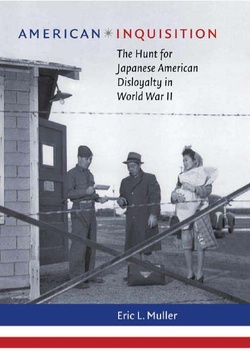
I only learned more about this a few years ago when Eric Muller from the University of North Carolina School of Law spoke at the Japanese American National Museum about his book, American Inquisition: The Hunt for Japanese American Disloyalty in World War II. According to Prof. Muller, there was a “loyalty bureaucracy” that was supposed to determine who could be trusted. The Western Defense Command (WDC), which oversaw the forced removal, was in charge of requests to return the West Coast. The Provost Marshall General’s Office (PMGO) vetted individuals who wanted to work in the war-related industry. The War Relocation Authority (WRA), who ran the camps, oversaw which inmates were allowed to leave and which got branded as disloyal and were shipped to the Tule Lake camp. Finally, an interdepartmental Japanese American Joint Board (JAJB) was supposed to coordinate the other three agencies, but did not function well, according to Muller.
Muller explains that the questionnaires camp inmates were forced to fill out, which included the infamous Questions 27 and 28, were the WRA’s attempt to ascertain loyalty. Factors such as if one was married to non-Japanese (interracial marriages were illegal in many states at that time, so there weren’t many), if one was a registered voter, and if one had visited Japan were major pluses and minuses. When I looked at my father’s information and that from my Uncle Akira, who ran the Rafu Shimpo, I noticed they both denied visiting Japan (I know the two of them went to Japan together for their grandfather’s funeral) and denied any ability to speak Japanese (also not true). Now, I understand why they did so.
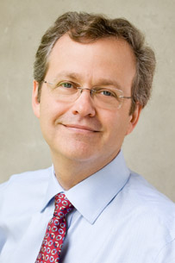
According to Muller, these agencies also used a point system in which every inmate would end up with a loyalty score. “The point systems were absurdly oversimplified and depended on cultural assumptions,” Muller notes. “Practicing judo earned a negative score, while playing little league baseball earned a positive. Buddhism was a negative; Shintoism was really negative. Christianity was a positive.”
So, inmates would get two points for being Christian, but have two points subtracted if they admitted they could speak Japanese. Under this system, about 25 percent of those incarcerated were deemed disloyal. Some were sent to places like Tule Lake and many others were denied access to jobs. Even after the war, some individuals were barred from returning to their homes. The government was really making their own determinations on who was more Japanese.
The employment question strikes a nerve with my family. My Uncle Akira kept a diary while in camp and in 1943, he wrote about trying to get a job and being turned down. “I was told that my name is on the ‘stop file.’ Just why, I don’t know. The office staff didn’t know either, but my name was on a Teletype from Washington indicating that I wasn’t okayed for clearance.
“That sure a helluva note. Now, they won’t even allow me, a citizen, to try to earn a few dollars to support myself. That practically means that I’m in a concentration camp and that my civil rights do not mean a thing. I’m a citizen, not disloyal…yet my clearance is held up and I can’t even go out for temporary work. In the first place, I should have been notified as to the reason so I could defend myself. But I wasn’t notified and I have no civil rights under the Constitution. This is not the American way. It’s not the way we learned it, and not the way we’ve come to regard it.”
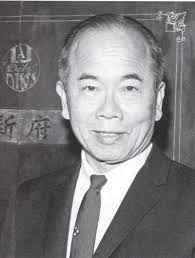
What is interesting about my uncle’s status is that he was Christian and not Buddhist and as I mentioned earlier, denied going to Japan or the ability to speak Japanese. He also enjoyed American sports like baseball and tennis and graduated from UCLA. It was probably his status as the publisher of a Japanese newspaper and the fact his father was among the Issei picked up by the FBI on December 7, 1941 that put him on the bad list.
On a personal note, when I first learned about my family’s imprisonment, I wanted to know what my father and others were thinking in the moment. Fortunately, my uncle wrote a diary and I got a pretty clear view. This also settled, at least for me, the question of what to call the camps. My uncle called them concentration camps in 1943 and that’s what I call them today.
Prof. Muller makes the point that he believes our government today could easily create another loyalty bureaucracy with an equally absurd point system to be used against another group of people. If there is another domestic attack, “I expect that some people will call for measures against U.S. citizens,” he writes. “Such an effort will be a civil-rights disaster.”
I also think the tragedy for our community, on top of the civil rights violations and economic devastation that took decades to overcome, is the diminishing of our Japaneseness. Some families stopped speaking Japanese and observing traditions. Many cut off ties to Japan itself and our relationship with the Japanese has been less than what it should have been. I’m not saying I would be fluent in Japanese or I would understand why we eat gobo during oshogatsu. But, I do feel I would have been more connected to my cultural heritage growing up. And I could have occasionally answered the question—who’s more Japanese?—by saying, “Me! Me!”
© 2014 Chris Komai


